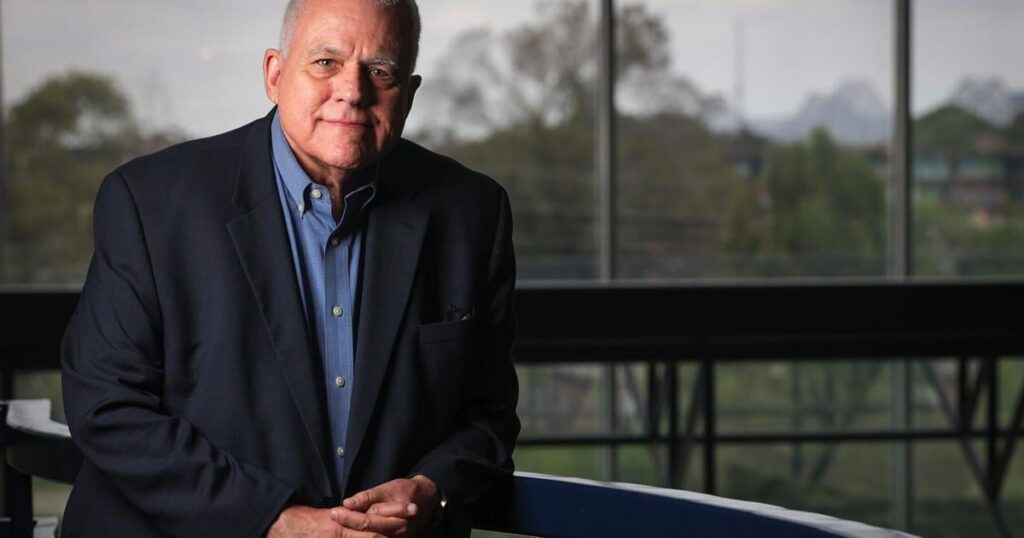Ken Ducote, who has been a fixture of New Orleans education for decades, often tells a story from his time working for the Orleans Parish School Board. At a board meeting in the 1990s, a parent asked how many of the district’s dilapidated schools were built “before the war.”
“Which war?” Ducote quipped, to laughter. “WWII? 61 schools. WWI? 17. The Spanish-American War? 7. The Civil War? 3.”
Times, and school buildings, have greatly changed since Ducote, now 75, got his start in New Orleans education as a math teacher in 1974 at John McDonogh High School, now home to Bricolage Academy charter school. His most recent — and, he swears, final — role was executive director of the Greater New Orleans Collaborative of Charter Schools, a group founded after Katrina to help charter schools open around the city.
He stepped down from that position last month and was succeeded by Sean Wilson, former CEO of the International School of Louisiana and International High School of New Orleans.
Over his long and eventful career, Ducote had a front-row seat to monumental shifts in New Orleans education, from district corruption scandals to the massive upheaval of Hurricane Katrina, the state’s takeover of most New Orleans schools and the creation of the nation’s only all-charter school system.
During an FBI probe into district corruption in the late 1990s and early 2000s, he acted as an information using “red mustang convertible” as a codeword when guilty parties left a paper trail. After Katrina destroyed many school records, he was a go-to consultant for FEMA and the district, a living encyclopedia of facts and figures about the city’s school buildings. A stickler for accuracy, he once made a sign to hang in the Recovery School District office that read: “There’s no ‘I’ in team and there’s no ‘U’ in McDonogh.”
Ducote has retired twice already but insists this time it will stick, other than teaching doctoral students at University of Holy Cross, some consulting and likely fielding calls about district facilities and lore.
In a recent interview, Ducote reflected on his time in New Orleans education.
The following interview has been condensed and edited for clarity.
How has the teaching profession changed?
Teaching is an important profession and people need to recognize that.
In 1979 I was Teacher of the Year and I couldn’t go to the ceremony because I had two little kids and was working a second job teaching math at night at University of New Orleans. Twenty-five years later they invited me back to give my acceptance speech.
On my way there I drove past an assistant principal who was selling tires, then I walked past the social studies teacher from Fannie C. Williams Middle School who was selling men’s shoes at Dillard’s and then past the Clinique counter where a teacher from Gentilly Woods School was selling Clinique products and then I walked into the restaurant and gave my speech I couldn’t give 25 years before because I was having to work two jobs because of a teacher’s salary.
What lessons stick out from your teaching days?
Stability is important.
By the time I had taught high school for seven years I knew which words would confuse students or which words to definitely use, which worksheets to forget about, which worksheets to concentrate on.
Teaching is a little art, some science.
What about different ways to run schools?
The question of the traditional or charter comes down to — especially in a big bureaucracy — decisions need to be made closer to the students so that you can actually respond to their needs.
In a big system, it’s harder. A big system can reinvent itself and could give (schools) more autonomy and not control everything that’s being done. But sometimes it’s hard to do.
What was your role in the days of corruption New Orleans public school system?
I was talking to a retired FBI agent who was into classic cars so we made “red Mustang convertible” the code for the corruption.
We had the files on the facilities and I would make an extra copy for the state audit and the FBI. When we were ready for them to come look at them, I called the retired FBI agent and said my daughter was ready to sell her red Mustang convertible.
What was your role after Hurricane Katrina?
I consulted with FEMA to help the state and the school board.
For example, a forensic paint specialist found 16 different layers of colored paint at the Live Oak School and they said, “The bottom layer was light blue, do you think that that was probably the original paint?”
They had all these things they had to identify for the federal construction program. I would give them the original building’s names so they could find records for the schools.
What are some of the biggest challenges that the district faces today?
You’ve got individual situations that the individual children have to deal with: the trauma, the pressure coming out of the pandemic, the social problems and emotional problems out there.
In a larger sense, there are so many disasters or interruptions to education day-to-day — from the boil-water order to hurricanes to the teacher shortage. You’ve also got the enrollment drop.
What makes a good school?
The same thing makes good schools then and now.
You’ve got a good school leader with a vision for what the school is going to be, a good team of professionals working there who have the same basic philosophy and vision, and parents who buy into the system.

